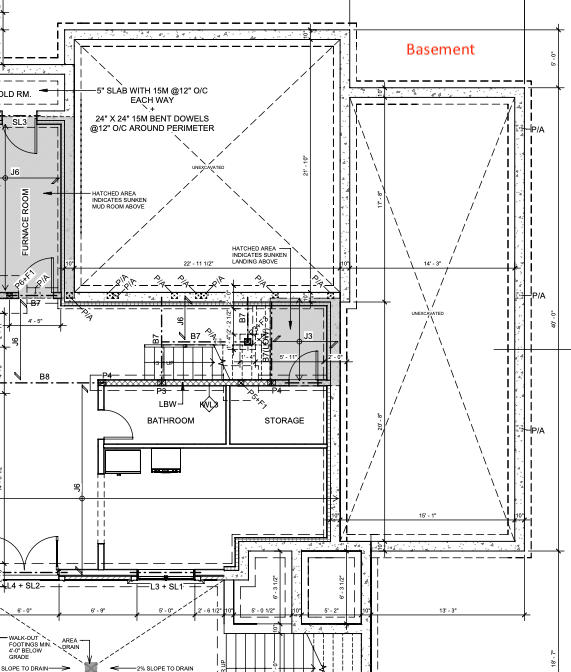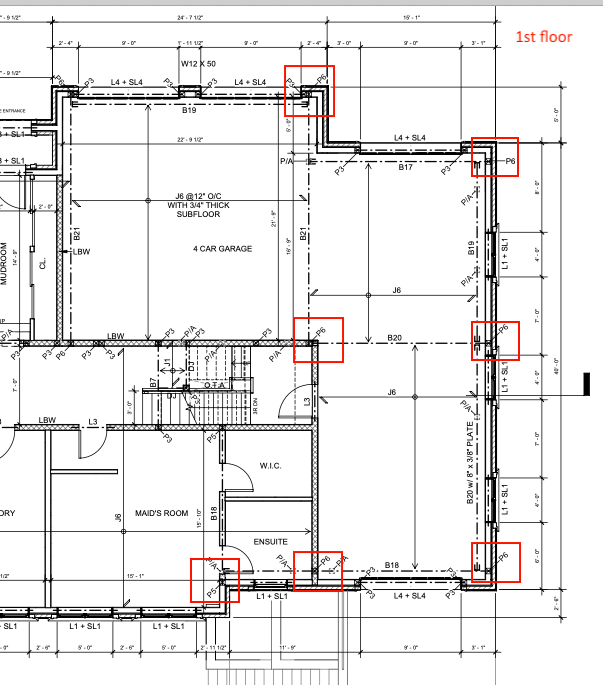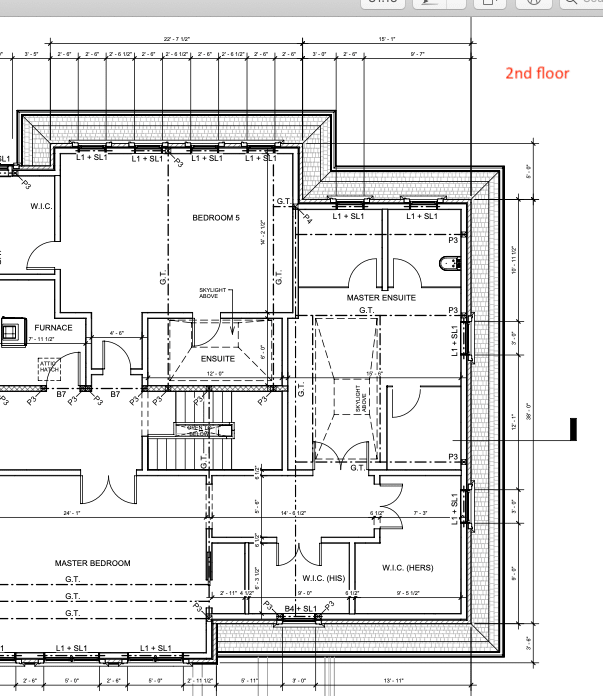-
1
- #1
Hi there,
I saw it a couple of residential houses design drawings. The designer used steel beams (like W10x45, W12x50, even W14x90) for the second floor load and one end of beam was supported by steel column (HSS 4"x4"x1/4"). However, the column was placed at the exterior foundation wall. I am roughly guessing the load on column might be 20,000 lbs or higher. The foundation wall was 10" thick and the footing was 16"wide and 8" deep. And there was no extra reinforcement in the foundation wall. My question is that is it safe to design like this? I am in Toronto, the house I saw is a two floor residential building with a nine foot height basement. I don't see that often so I think it is bold to do so. Or maybe my experience is not sufficient enough coz I am into residential design for a year. If this is safe, it will be very helpful to do many designs with aesthetic interior.
I saw it a couple of residential houses design drawings. The designer used steel beams (like W10x45, W12x50, even W14x90) for the second floor load and one end of beam was supported by steel column (HSS 4"x4"x1/4"). However, the column was placed at the exterior foundation wall. I am roughly guessing the load on column might be 20,000 lbs or higher. The foundation wall was 10" thick and the footing was 16"wide and 8" deep. And there was no extra reinforcement in the foundation wall. My question is that is it safe to design like this? I am in Toronto, the house I saw is a two floor residential building with a nine foot height basement. I don't see that often so I think it is bold to do so. Or maybe my experience is not sufficient enough coz I am into residential design for a year. If this is safe, it will be very helpful to do many designs with aesthetic interior.



